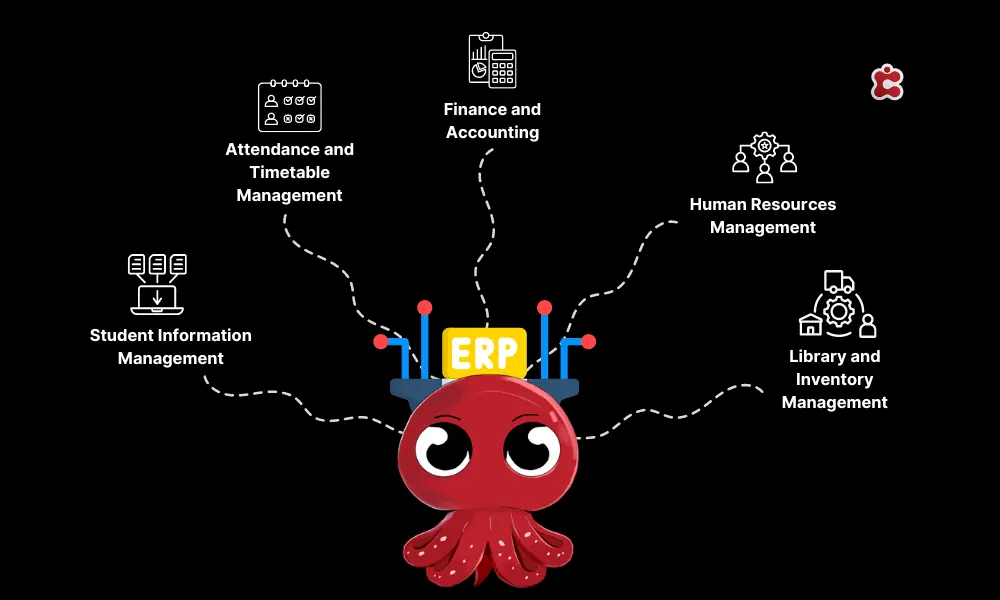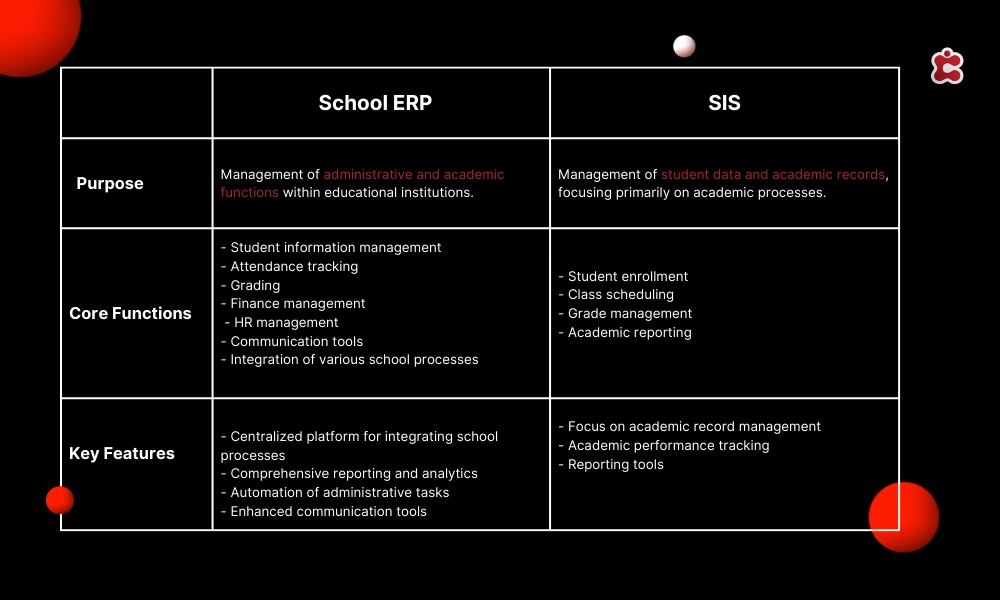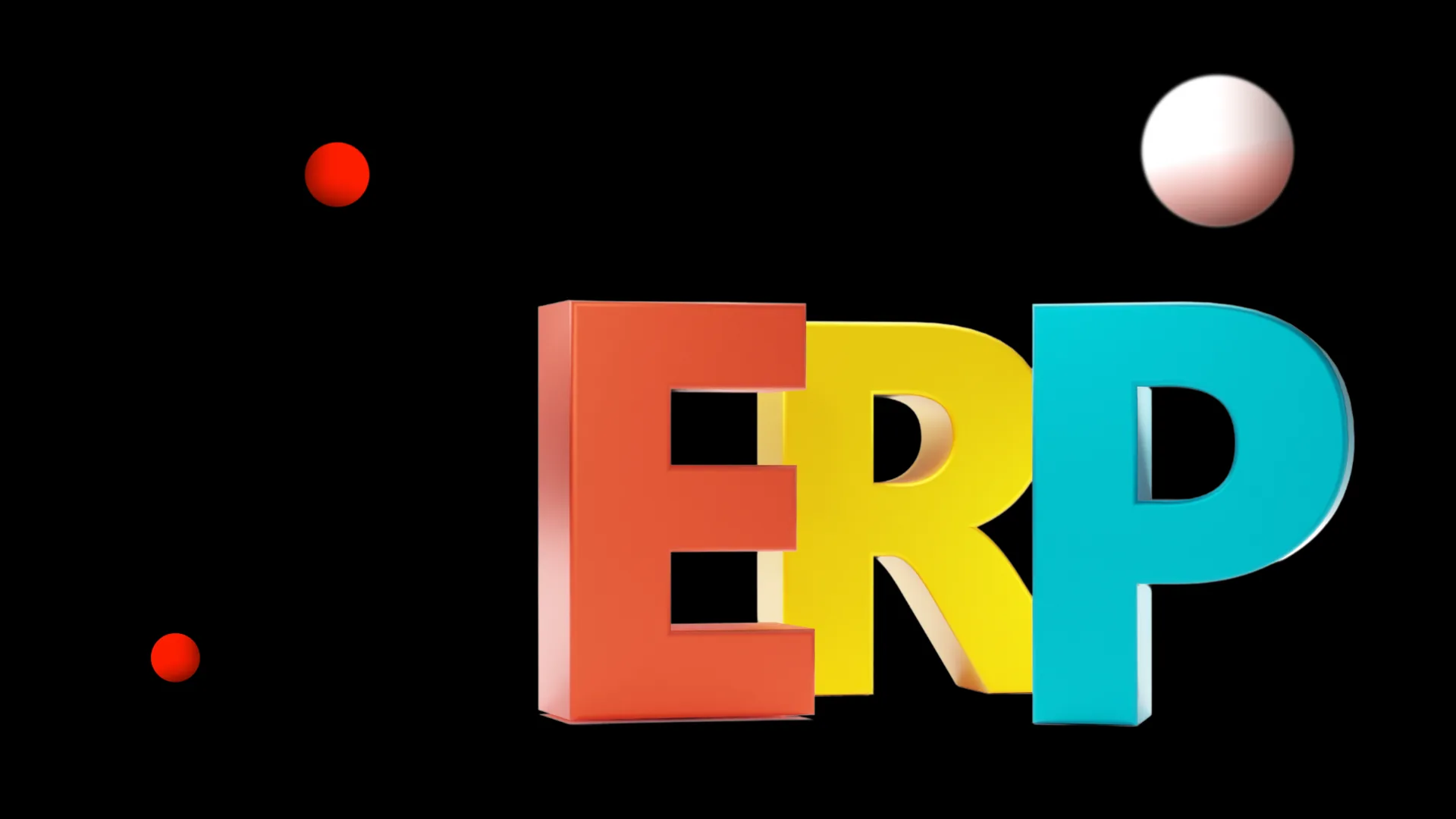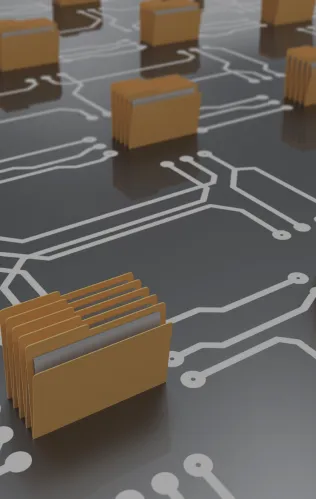There are so many software options on the market. You need one for finances, one to track student progress, another for scheduling, and yet another for communication. It can be overwhelming to manage all these separate tools and ensure they work together seamlessly. This is where an ERP, or Enterprise Resource Planning, system comes into play.
Think of an ERP, or Enterprise Resource Planning system, as a master key that unlocks all the doors in a building. Originally designed for businesses, these systems have evolved to cater to the unique needs of schools, demonstrating their adaptability and understanding of the educational environment.
As schools increasingly embrace technology to enhance their educational programs and improve administrative efficiency, ERP systems are emerging as the perfect solution. These systems offer a unified platform that simplifies a school’s complex operations, making them easier to manage and enhancing overall productivity.
We will explore everything you need to know about the world of School ERP systems. Learn about their key features, the benefits they bring, and what schools should consider when implementing them.

Understanding School ERP Systems
So, what exactly is a School ERP system? Imagine having a Swiss Army knife for school management—one tool that handles all the tasks and makes everything run smoothly. A School ERP system is a comprehensive software solution designed to integrate and streamline every aspect of running a school. It covers student information management, attendance tracking, grading, finance, HR management, and more, all within a single platform.
How It Works
- Information from various school departments—such as student details, attendance records, and financial data—is entered into the system.
- The system consolidates this data into a central database, making it accessible from one place. For instance, once a student’s information is entered into the system, various modules can use it without needing re-entry.
- The School ERP system integrates with existing databases and software. This means that if a school already has a digital grade book or finance software, the ERP can connect with these systems to pull in data, ensuring all information is up-to-date and synchronized across the platform.
- Routine tasks like attendance marking, grade entry, and fee collection are automated. For example, teachers can take attendance on a digital platform, which automatically updates the system and notifies parents of absences. Similarly, when grades are entered, they are instantly accessible to students and parents, reducing the need for paper-based reports.
- Teachers, administrators, and even parents can access relevant information through a user-friendly interface. The system generates reports and analytics to help in decision-making. For instance, administrators can quickly pull up reports on student performance, attendance trends, or financial summaries, allowing for more informed decisions.
This seamless integration ensures that all school operations are connected and efficient. It eliminates data silos and minimizes manual entry. Schools can enjoy a smoother, more accurate flow of information.
Key Features of a School ERP System
Now that we have demystified School ERP Systems let’s look at their key features. These are the gears that keep the machine running smoothly. They ensure that every aspect of school management is streamlined and efficient.
Student Information Management
At the heart of any School ERP system is its ability to centralize and organize student information. This feature tracks everything from basic personal details to academic records and extracurricular activities, providing a comprehensive profile for each student.
Attendance and Timetable Management
Gone are the days of manual attendance taking. With this feature, teachers can quickly record student attendance digitally, and administrators can generate reports to monitor attendance trends. Additionally, the system helps in creating and managing timetables, ensuring that classes run smoothly without scheduling conflicts.
Grading and Examination
Grading and examination modules simplify the process of entering grades, calculating averages, and generating report cards. Teachers can input grades online, and the system automatically calculates final grades based on predefined criteria, saving time and reducing errors.
Finance and Accounting
This feature streamlines financial processes such as fee collection, budgeting, and expense tracking. It provides real-time insights into the school’s financial health and generates reports for auditing purposes.
Human Resources Management
From recruiting new staff to managing payroll and performance evaluations, the HR management module handles all aspects of human resources. It maintains employee records, tracks leave balances, and facilitates communication between staff and administration.
Library and Inventory Management
Finally, the library and inventory management module helps in cataloging library resources, tracking inventory, and managing asset distribution. It ensures that the school’s resources are efficiently utilized and maintained.
Benefits of Implementing a School ERP System
- Efficiency and Productivity: With a School ERP system in place, tasks that once required hours of manual effort can now be completed in minutes. Administrative processes like student enrollment, fee collection, and timetable scheduling become automated.
- Enhanced Communication: School ERP system facilitates seamless communication among students, parents, teachers, and administrators. It contains features like messaging platforms, announcements, and discussion forums.
- Data Accuracy and Security: Gone are the days of misplaced files and error-prone data entry. With a centralized database and stringent security measures, School ERP systems ensure that student records and financial data are securely stored and easily accessible when needed.
- Improved Decision Making: Whether it’s analyzing student performance trends, monitoring budget allocations, or identifying areas for improvement, access to accurate and up-to-date information empowers leaders to strategize effectively and drive positive change.
- Cost Savings: While implementing a School ERP system may require an initial investment, the long-term benefits far outweigh the costs. By streamlining processes, reducing paperwork, and minimizing manual labor, schools can significantly cut down on operational expenses. Moreover, the increased efficiency and productivity gained from the system result in tangible savings over time.
School ERP vs. SIS
So it might seem that a School ERP system and a Student Information System (SIS) are just two sides of the same coin, but there are some key differences worth exploring:

Implementation Considerations
With any new software implementation, there are several key considerations that educational institutions need to keep in mind.
1. Initial Setup and Integration
Setting up a school ERP system involves planning and coordinating to integrate the system with existing databases, software, and processes within the institution. This may involve data migration, customization, and training for staff members to ensure seamless integration and optimal usage.
2. Cost Considerations
While the benefits of implementing a School ERP system are numerous, institutions must also consider the initial costs involved. This includes not only the cost of purchasing the software but also expenses related to customization, training, ongoing support, and maintenance. It’s essential to weigh these costs against the potential long-term savings.
3. Data Privacy and Security
Protecting sensitive student and institutional data is paramount. Schools must ensure that the chosen ERP system complies with relevant data privacy regulations and employs robust security measures. This will safeguard information from unauthorized access, breaches, or data loss. Additionally, staff members should receive training on best practices for data handling and security protocols.
Classter’s ERP: Unlocking Operational Excellence
If you want a school ERP system that goes above and beyond, Classter is your answer. Classter is not just your average ERP; it’s a comprehensive solution designed specifically for educational institutions.
Key Features of Classter’s ERP:
- Financial Management: Gain complete control over your institution’s finances with detailed reporting, budget management, and seamless billing and invoicing.
- Student Administration: Manage student data, admissions, enrollment, and academic records in one centralized database, ensuring personalized support for every student.
- Reporting and Analytics: Unlock actionable insights into operational efficiency, financial health, and academic performance, empowering informed decision-making and continuous improvement.
- Integrated Communication Tools: Foster clear and effective communication channels within your institution, ensuring that students, staff, and parents are always informed and engaged.
- Scalability and Flexibility: Classter’s ERP is designed to scale with your institution, offering flexible modules and customizable features to adapt to your evolving needs.
With Classter, you can maximize efficiency, optimize resource allocation, safeguard institutional data, and foster a thriving learning community—all within a unified, user-friendly platform. Say goodbye to inefficiencies and hello to operational excellence with Classter’s ERP.
Ready to unlock new levels of operational efficiency for your institution? Discover the power of Classter’s ERP today.
FAQ’s
A School ERP (Enterprise Resource Planning) system is comprehensive software designed to integrate and streamline various administrative and academic functions within educational institutions, simplifying operations and enhancing productivity.
While both systems manage educational processes, ERP systems cover a wider range of administrative functions beyond academic records, including finance and HR management. On the other hand, a Student Information System (SIS) primarily focuses on managing student data and academic records.
Classter is considered on of the best School ERP systems. It is specifically designed for educational institutions, offering comprehensive features for financial management, student administration, reporting and analytics, integrated communication tools, scalability, and flexibility.




